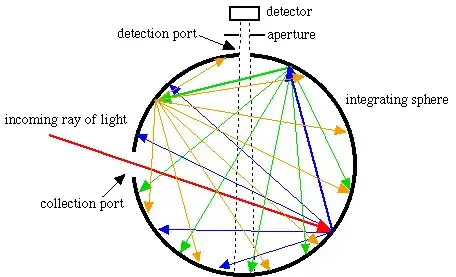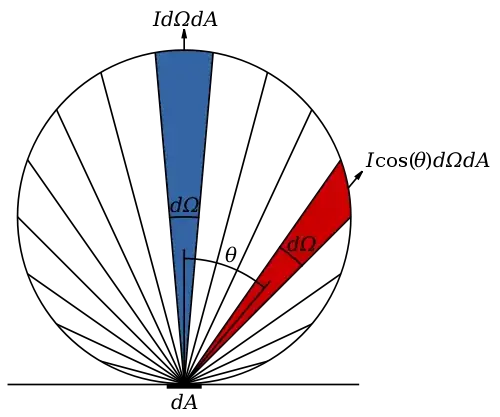Why must an integrating sphere be a sphere? Why can't it be an integrating cube? What is the difference? Could I use a cube to measure total illuminance like an integrating sphere does?

Why must an integrating sphere be a sphere? Why can't it be an integrating cube? What is the difference? Could I use a cube to measure total illuminance like an integrating sphere does?

Surface coating of an integrating sphere is optimized for low losses. This white coating (barium sulfate or PTFE/Teflon) acts like an ideal lambertian scatterer.

First generation stray light (blue in OP's picture) shows this light cone. Imagine this cone at the corner of a cube: some light will hit a wall again and suffers tiny losses. Detector port in cubic geometry hat a lower propability to to be hit with the ray of highest energy. With a sphere however all surface normal vectors point to its center. Remember, that these rays "carry more energy" according to Lambert's cosine law. It will have lower losses than a measurement head with a cube geometry. A spherical geometry reduces the necessary number of stray events.
Resources
In a sphere, any light emitted from the center will reflect off the sides at normal incidence come back to the center. In a cube, some rays never return to the center, so you aren't measuring all of the light emitted, which defeats the purpose of the device.